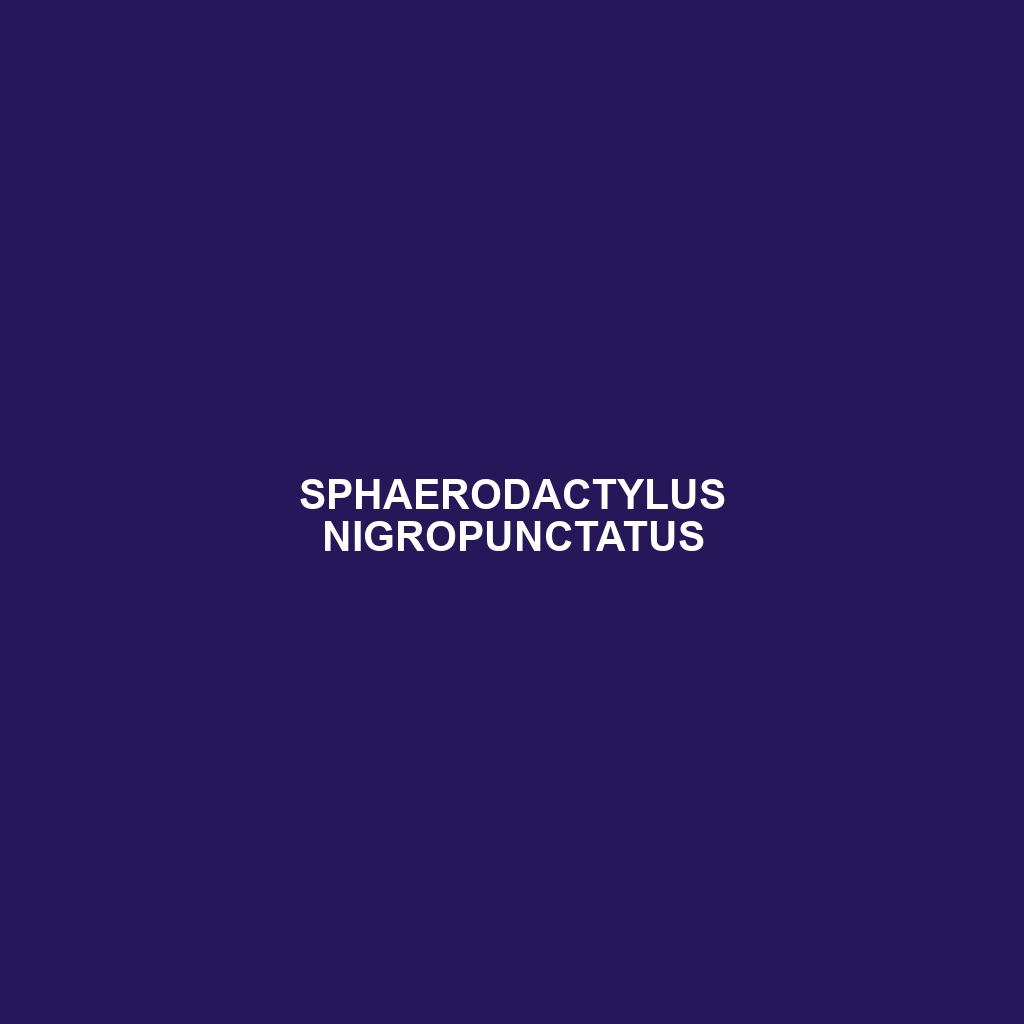Common Name
Sphaerodactylus nigropunctatus
Scientific Name
Sphaerodactylus nigropunctatus
Habitat
Sphaerodactylus nigropunctatus, commonly known as the black-spotted pygmy gecko, is primarily found in the humid regions of the Caribbean, particularly in areas like Puerto Rico and surrounding islands. This species thrives in rainforests where the climate is tropical, offering the warmth and moisture essential for its survival. It often inhabits both the forest floor and the lower shrub layers, utilizing leaf litter, tree bark, and fallen logs for cover. Rainforests boast high biodiversity, making them ideal habitats for these geckos. Additionally, they can be observed in adjacent temperate forests and undergrowth, where humidity levels remain relatively high, allowing them to maintain their moisture balance.
Physical Characteristics
Sphaerodactylus nigropunctatus is a small-sized lizard, typically measuring about 3 to 4 inches (7.6 to 10 cm) in total length. One of its most distinguishing features is its coloration, characterized by a light brown or beige background adorned with prominent black spots, which serve as camouflage against predators. The gecko has a flattened body and a long tail, adaptations that enable it to navigate through tight spaces in its forest environment. Its toe pads are small but effective, facilitating a strong grip on various substrates, making it an adept climber. These physical attributes not only enhance its ability to hide from predators but also assist in hunting and traversing its environment efficiently.
Behavior
Sphaerodactylus nigropunctatus engages in primarily nocturnal behavior, becoming active during the night when it emerges to hunt for food and interact with others of its species. During the mating season, which typically occurs in spring and early summer, males display elaborate courtship rituals that include head bobbing and vocalizations to attract females. Social interactions among individuals can also be observed, although they tend to be solitary outside of mating periods. Unique to this species is its ability to remain nearly motionless when threatened, relying on its cryptic coloration to blend into the environment, thereby reducing the chances of predation.
Diet
This species is considered an insectivore, primarily feeding on a diet consisting of small insects and arthropods, including ants, beetles, and spiders. The black-spotted pygmy gecko has adapted to hunt for prey both on the ground and in vegetation. Its feeding patterns typically involve ambush tactics, where it blends into its surroundings and waits for unsuspecting prey to come within striking distance. This diet is essential not only for its energy needs but also for maintaining the balance of insect populations in its habitat.
Reproduction
The reproductive cycle of Sphaerodactylus nigropunctatus is characterized by oviparity, meaning the females lay eggs rather than giving birth to live young. The breeding season aligns with the warmer months when environmental conditions are optimal for offspring survival. Females typically lay two eggs per clutch in concealed locations such as under leaf litter or in crevices, with a gestation period of approximately 30 to 60 days. Upon hatching, the young geckos are independent and receive no parental care, quickly becoming adept at navigating their environment. This reproductive strategy allows for rapid population turnover, critical in maintaining the species amidst environmental changes.
Conservation Status
As of now, Sphaerodactylus nigropunctatus is classified as least concern on the IUCN Red List; however, its population is affected by habitat loss resulting from deforestation and urbanization. While the species is currently not endangered, ongoing habitat destruction continues to pose a threat. Conservation efforts focusing on habitat preservation and restoration, along with awareness campaigns about the importance of forest ecosystems, are essential to ensure the long-term survival of this unique gecko.
Interesting Facts
One fascinating aspect of Sphaerodactylus nigropunctatus is its remarkable adaptability; it can alter its hunting strategies based on prey availability and predator activity. Furthermore, these geckos are known to exhibit a stress response that includes shedding their tails when threatened, a survival mechanism that allows them to escape while the predator is distracted. Additionally, they possess the ability to adhere to smooth surfaces due to their specialized toe pads, making them efficient climbers.
Role in Ecosystem
Sphaerodactylus nigropunctatus plays a crucial role in its ecosystem as both a predator and prey. By controlling insect populations, it contributes significantly to the ecological balance. As a prey item for various birds and larger reptiles, they are also integral to the food web. Their presence helps indicate the health of rainforest ecosystems, fulfilling a role as a keystone species. The overall well-being of this gecko reflects the condition of its habitat, highlighting the interconnectedness of species within a biodiversity-rich environment.
